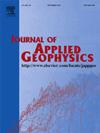Investigating nonlinear resistivity characteristics and mechanisms of coal during various loading stages
IF 2.2
3区 地球科学
Q2 GEOSCIENCES, MULTIDISCIPLINARY
引用次数: 0
Abstract
Accurately revealing the resistivity response patterns during coal fracture caused by loading and failure process of coal is fundamental to the application of DC resistivity methods in detecting coal dynamic disasters. This work delves into the intricate variability patterns of electrical resistivity exhibited by coal across diverse loading phases, and finds that there is fluctuation in electrical resistivity during the coal failure process, rather than the linear function relationship obtained in previous studies. The fluctuation in resistivity during the coal fracture process arises from the closure of existing fractures and the generation of new fractures. The former decreases resistivity, while the latter increases it, and their combined effect causes resistivity to fluctuate. Through long-range correlation analysis, it was found that the electrical resistivity of coal exhibits significant self similarity during the loading and fracturing process, with a Hurst exponent H higher than 0.98. The resistivity during coal fracture process exhibits fractal characteristics, with fractal box dimensions of 1.328 and 1.450 for the resistivity of the two samples, respectively. The fluctuation of resistivity during the loading process of coal is closely related to the compression process and development of fractures. In the four stages of coal sample loading, fractures evolve from initial formation, expansion to complete fracturing, with the fractal box-counting dimension exhibiting a trend of increase-increase-decrease. These research findings provide new insights into using resistivity inversion for coal fracture detection, which is of significant importance for the development of resistivity technology.
研究了煤在不同加载阶段的非线性电阻率特征及其机理
准确揭示煤在加载破坏过程中破裂时的电阻率响应规律是直流电阻率法在煤动力灾害探测中的应用基础。本文深入研究了煤在不同加载阶段电阻率的复杂变化规律,发现煤在破坏过程中电阻率存在波动,而不是以往研究得出的线性函数关系。煤在断裂过程中电阻率的波动是由于既有裂缝闭合和新裂缝的生成而引起的。前者降低电阻率,后者提高电阻率,两者的共同作用导致电阻率波动。通过远程相关分析发现,在加载和压裂过程中,煤的电阻率具有显著的自相似性,Hurst指数H大于0.98。煤断裂过程中电阻率表现出分形特征,两试样的电阻率分形盒维数分别为1.328和1.450。煤在加载过程中电阻率的波动与压缩过程和裂隙发育密切相关。在煤样加载的4个阶段,裂缝由初始形成、扩展到完全破裂,分形盒数维数呈现出增大-增大-减小的趋势。这些研究成果为利用电阻率反演进行煤层裂缝探测提供了新的思路,对电阻率技术的发展具有重要意义。
本文章由计算机程序翻译,如有差异,请以英文原文为准。
求助全文
约1分钟内获得全文
求助全文
来源期刊

Journal of Applied Geophysics
地学-地球科学综合
CiteScore
3.60
自引率
10.00%
发文量
274
审稿时长
4 months
期刊介绍:
The Journal of Applied Geophysics with its key objective of responding to pertinent and timely needs, places particular emphasis on methodological developments and innovative applications of geophysical techniques for addressing environmental, engineering, and hydrological problems. Related topical research in exploration geophysics and in soil and rock physics is also covered by the Journal of Applied Geophysics.
 求助内容:
求助内容: 应助结果提醒方式:
应助结果提醒方式:


